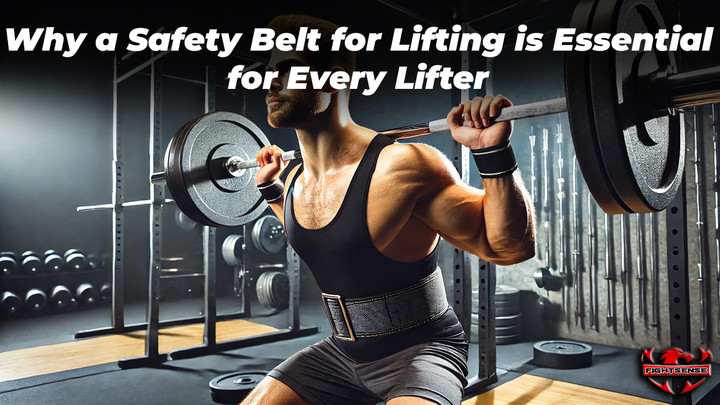Why a Safety Belt for Lifting is Essential for Every Lifter
20th Mar 2025
Whether success and safety in lifting heavy weights are feasible depends totally on the appropriate gear. Among the most crucial tools for preserving proper posture and avoiding back problems is a safety belt used for lifting. This blog will provide the grounds for safe and effective lifting depending on a safety lifting belt.
Key Highlights
-
A safety belt for lifting helps support the core, restoring posture, and preventing injuries.
-
It improves core stability, helps reduce tiredness, and improves performance.
-
Material weight, thickness, and fit for best efficacy all determine the appropriate belt.
What is a Safety Belt for Lifting?
Aligning the spine and core will help you maintain good posture and reduce your chances of accidents by supporting your lower back during heavy lifting activities. Particularly for lifts like deadlifts and squats, a lifting safety belt aids core stability and offers necessary support from robust leather or reinforced cloth.
Why You Need a Safety Belt for Lifting
1. Improves Posture and Stability
Correct posture helps to keep spine alignment during big lifts, therefore reducing damage by using a lifting safety belt. It guarantees that during raises, your back neither circles nor overreaches.
2. Enhances Performance
The safety lifting belt provides outstanding core stability by raising intra-abdominal pressure, allowing you to lift more weight with better control and less effort.
3. Prevents Lower Back Injuries
Particularly in hard or maximum exercise like squats and deadlifts, the safety belt for lifting strains the lower back and shields the spine from damage.
4. Supports Long-Term Health
Regular usage of a lifting safety belt helps to maintain spinal health by way of constant support during hard lifting, therefore preventing persistent discomfort and damage.
How to Choose the Right Safety Belt for Lifting
When selecting a safety lifting belt, consider the following:
-
Material: Leather belts are tough; cotton belts are light and more flexible.
-
Width and Thickness: To provide perfect support for higher lifts, think about a larger, thicker belt.
-
Fit: For personalized support, the belt should move freely and suit your waist somewhat securely.
Shop Now !
Conclusion
Any significant lifter should most definitely be wearing a safety belt while lifting. It helps the lower back, reduces the risk of damage under big lifts, and increases performance. Whether your lifters have little or extensive experience, adding a safety lifting belt to your program will ensure safer, more effective training.
Disclaimer
This website satisfies informational needs; it does not advertise any brand. See a fitness expert before deciding on equipment.
FAQs
1. Do I need a safety belt for every lift?
Use a safety lifting belt for heavy lifts or when performing compound movements like deadlifts or squats.
2. How tight should the safety lifting belt be?
The safety lifting belt should be tight enough to offer support even if it is not as firm as it would be to restrict breathing or movement.
3. Can a safety lifting belt prevent all injuries?
Even though it lowers risk, a safety lifting belt cannot completely avoid the necessity of appropriate technique.
4. How should I keep my safety lifting belt well-shaped?
Generally, keep your belt dry and clean. Leather belts will help prevent cracks.
5. What’s the difference between a safety lifting belt and a weightlifting belt?
Though both help, a safety lifting belt concentrates more on general spine stability and injury avoidance than a weightlifting belt.

